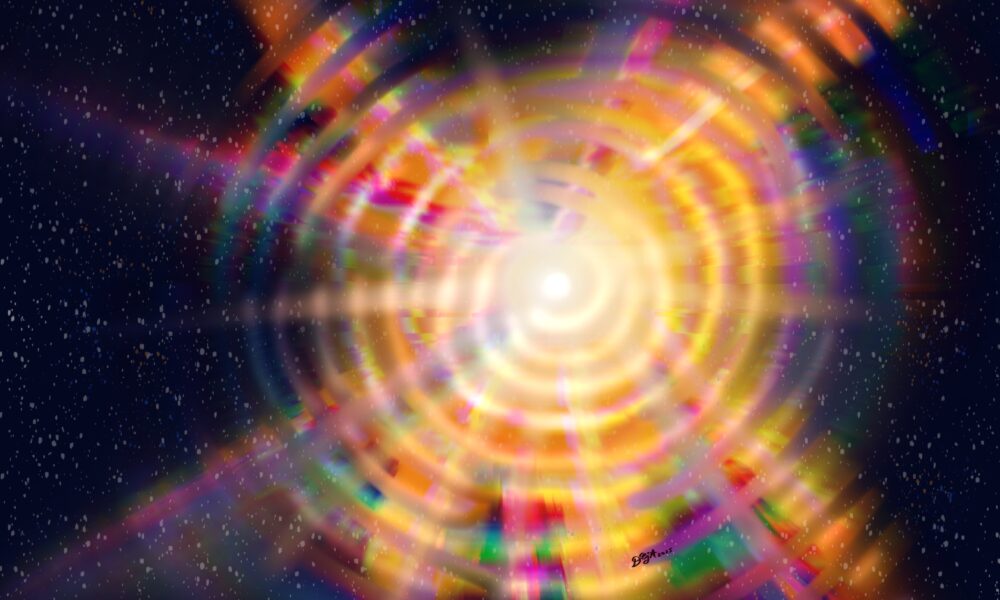For some, seeing images of distant galaxies induces feelings of excitement and curiosity. For others, it sparks fear and a sense of insignificance. And who can blame them? It’s easy to feel small when living in a seemingly infinite universe.
The James Webb Space Telescope
On Feb. 14, at the sixth McGill Physics Society Colloquium of 2025, guest speaker Sarah Rugheimer—an astrobiologist and Associate Professor at York University—delivered a lecture on the James Webb Space Telescope, the most technologically advanced space observatory ever created. Known for its breathtaking images of distant galaxies and cosmic phenomena, Webb has opened new frontiers in our understanding of the universe.
Rugheimer began by explaining the remarkable technology behind Webb, focusing on its primary mirror, which is composed of 18 smaller, gold-plated mirrors that measure a combined 6.5 metres in diameter.
“These 18 different [mirrors] are each getting their own image, and then they have to be brought together to sing as one choir, so to speak, so that they actually are functioning as a single telescope,” Rugheimer said in her lecture.
The mirrors work together to concentrate their light onto one smaller secondary mirror which reflects back to the telescope’s processing system, ultimately allowing Webb to capture extremely high-resolution images. To reflect their light onto such a small point, each mirror must be able to adjust its position within eight nanometres of precision, equivalent to one ten-thousandth of a human hair.
Webb & Hubble
Before Webb claimed the title of ‘most advanced telescope ever built,’ the Hubble Space Telescope was the reigning champion. Hubble, a reflecting telescope, captured the first images of deep space, revealing thousands of galaxies, each with hundreds of billions of stars. First launched in 1990 and still functioning today, it has fundamentally changed our understanding of the universe.
While Hubble captures light in the ultraviolet and visible spectrum, Webb’s much larger mirror surface allows it to capture longer, infrared wavelengths of light. Because our universe is expanding, light waves from distant galaxies are subject to the Doppler effect, meaning they have been stretched by the time they reach us. These stretched wavelengths are redshifted into the infrared frequency range, making Webb an ideal candidate for capturing them.
“James Webb [Space Telescope] is needed in order to see those most distant galaxies because that light has really shifted to those infrared wavelengths. So Webb is able to just look back further than Hubble ever could,” Rugheimer explained.
Infrared wavelengths also paint a clearer picture of our universe, since they travel right through clouds of gas and debris, revealing details that Hubble couldn’t capture.
Together, these telescopes give us clues about the early stages of the universe’s formation. The light emitted from these distant galaxies has often been travelling for billions of years by the time it finally reaches the telescopes’ point of view.
“Hubble can see back to about a billion years after the Big Bang, and Webb is able to go back to 0.3 billion years.” Rugheimer said. “Telescopes are time machines in a way, because of the constant speed of light. The further we look away, the earlier the parts of the universe we see.”
From exoplanets to our own solar system
Webb’s scope isn’t limited to galaxies and supernovas: It is also helping scientists explore exoplanets—planets outside of our solar system. Rugheimer highlighted the TRAPPIST-1 system in particular, containing three Earth-sized exoplanets in the habitable zone, where conditions may be suitable for life.
Closer to home, Webb has also captured the clearest picture of Neptune’s rings in existence and imaged water plumes on one of Saturn’s moons that are larger than planet Earth.
Rugheimer shared a personal moment during Webb’s launch on Christmas Day, 2021, reflecting on the significance of Webb in our journey through the universe.
“We were watching it on our cell phone, my husband and I, and I started to cry as this telescope launched: This is really the telescope of our generation.”









